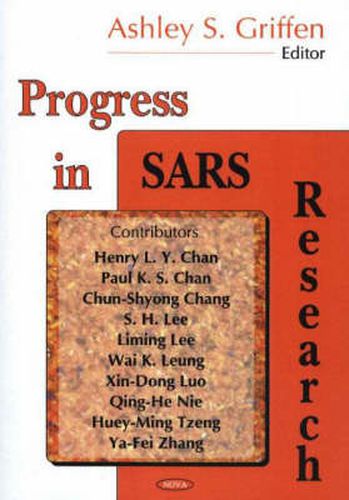Readings Newsletter
Become a Readings Member to make your shopping experience even easier.
Sign in or sign up for free!
You’re not far away from qualifying for FREE standard shipping within Australia
You’ve qualified for FREE standard shipping within Australia
The cart is loading…






SARS is an acronym for Severe acute respiratory syndrome (SARS) which is a viral respiratory illness that was recognised as a global threat in March 2003, after first appearing in Southern China in November 2002. The illness usually begins with a high fever (measured temperature greater than 100.4 F [>38.0 C]). The fever is sometimes associated with chills or other symptoms, including headache, general feeling of discomfort, and body aches. Some people also experience mild respiratory symptoms at the outset. Diarrhoea is seen in approximately 10 percent to 20 percent of patients. After 2 to 7 days, SARS patients may develop a dry, non-productive cough that might be accompanied by or progress to a condition in which the oxygen levels in the blood are low (hypoxia). In 10 percent to 20 percent of cases, patients require mechanical ventilation. Most patients develop pneumonia. SARS is caused by a previously unrecognised coronavirus, called SARS-associated coronavirus (SARS-CoV). It is possible that other infectious agents might have a role in some cases of SARS. The primary way that SARS appears to spread is by close person-to-person contact. This important new book details the latest advances in this field.
$9.00 standard shipping within Australia
FREE standard shipping within Australia for orders over $100.00
Express & International shipping calculated at checkout
SARS is an acronym for Severe acute respiratory syndrome (SARS) which is a viral respiratory illness that was recognised as a global threat in March 2003, after first appearing in Southern China in November 2002. The illness usually begins with a high fever (measured temperature greater than 100.4 F [>38.0 C]). The fever is sometimes associated with chills or other symptoms, including headache, general feeling of discomfort, and body aches. Some people also experience mild respiratory symptoms at the outset. Diarrhoea is seen in approximately 10 percent to 20 percent of patients. After 2 to 7 days, SARS patients may develop a dry, non-productive cough that might be accompanied by or progress to a condition in which the oxygen levels in the blood are low (hypoxia). In 10 percent to 20 percent of cases, patients require mechanical ventilation. Most patients develop pneumonia. SARS is caused by a previously unrecognised coronavirus, called SARS-associated coronavirus (SARS-CoV). It is possible that other infectious agents might have a role in some cases of SARS. The primary way that SARS appears to spread is by close person-to-person contact. This important new book details the latest advances in this field.